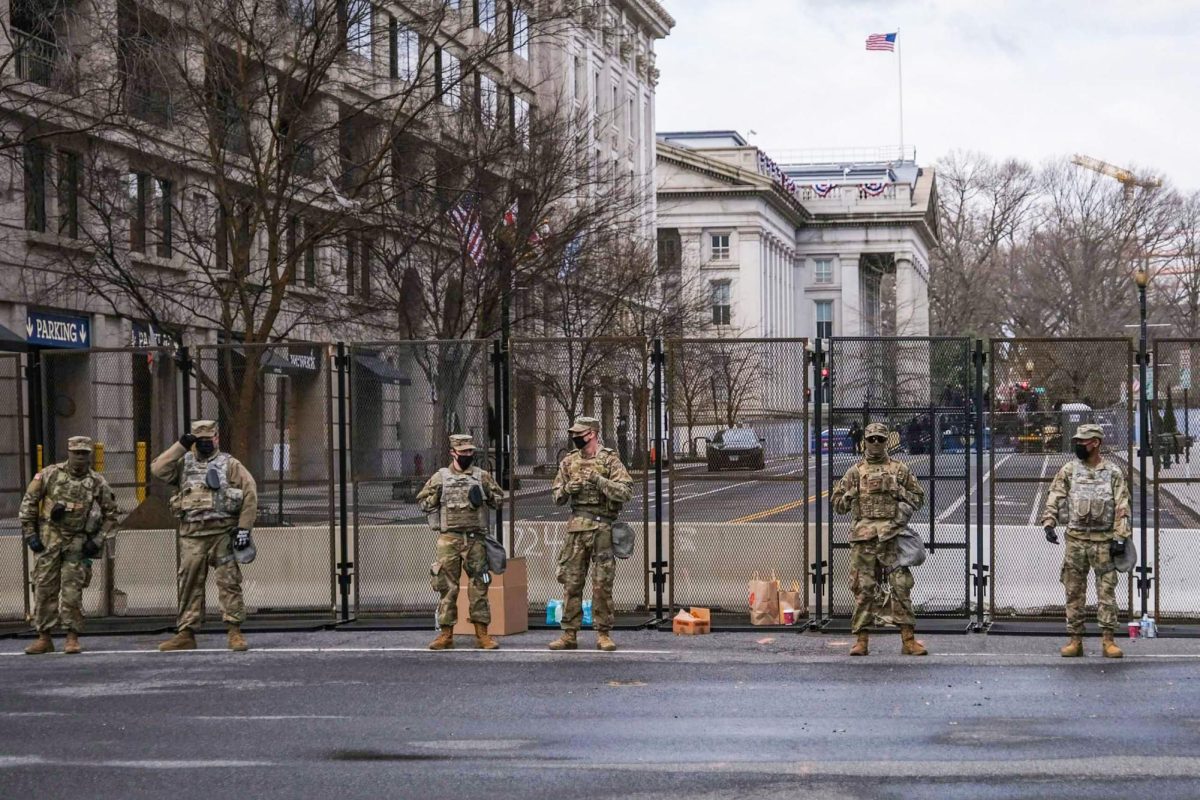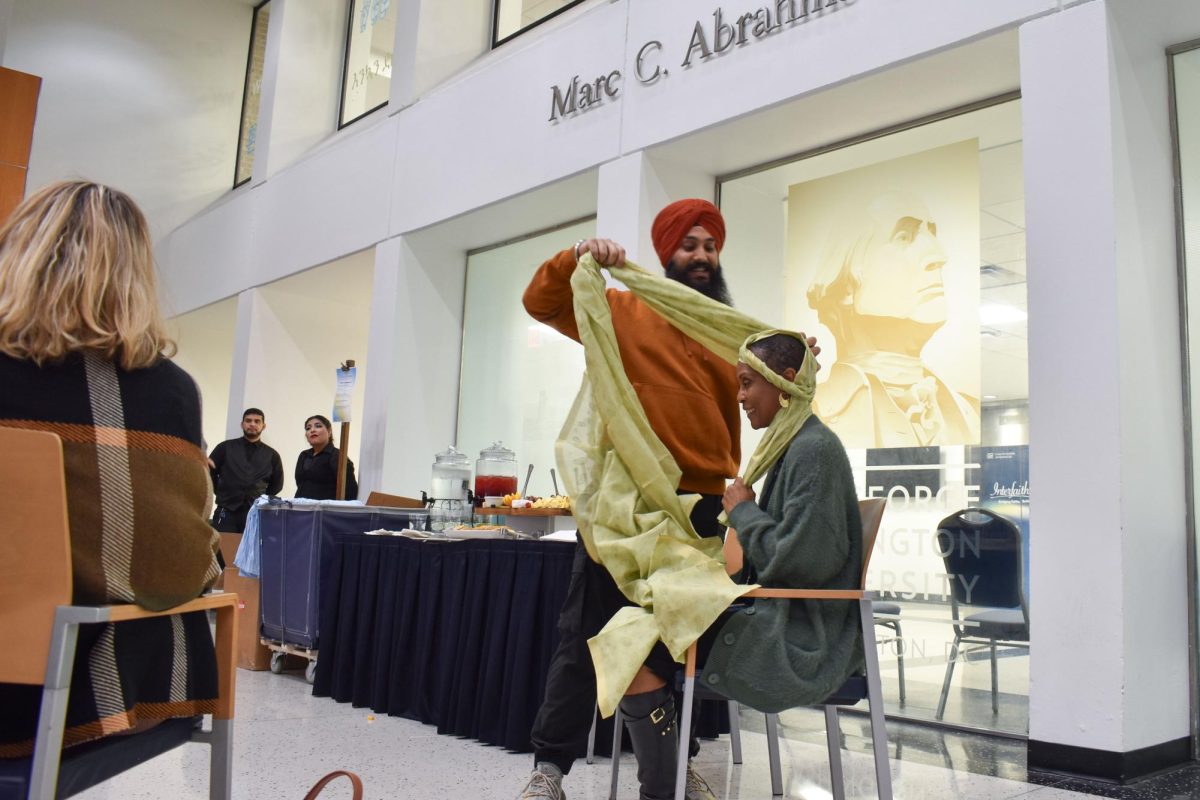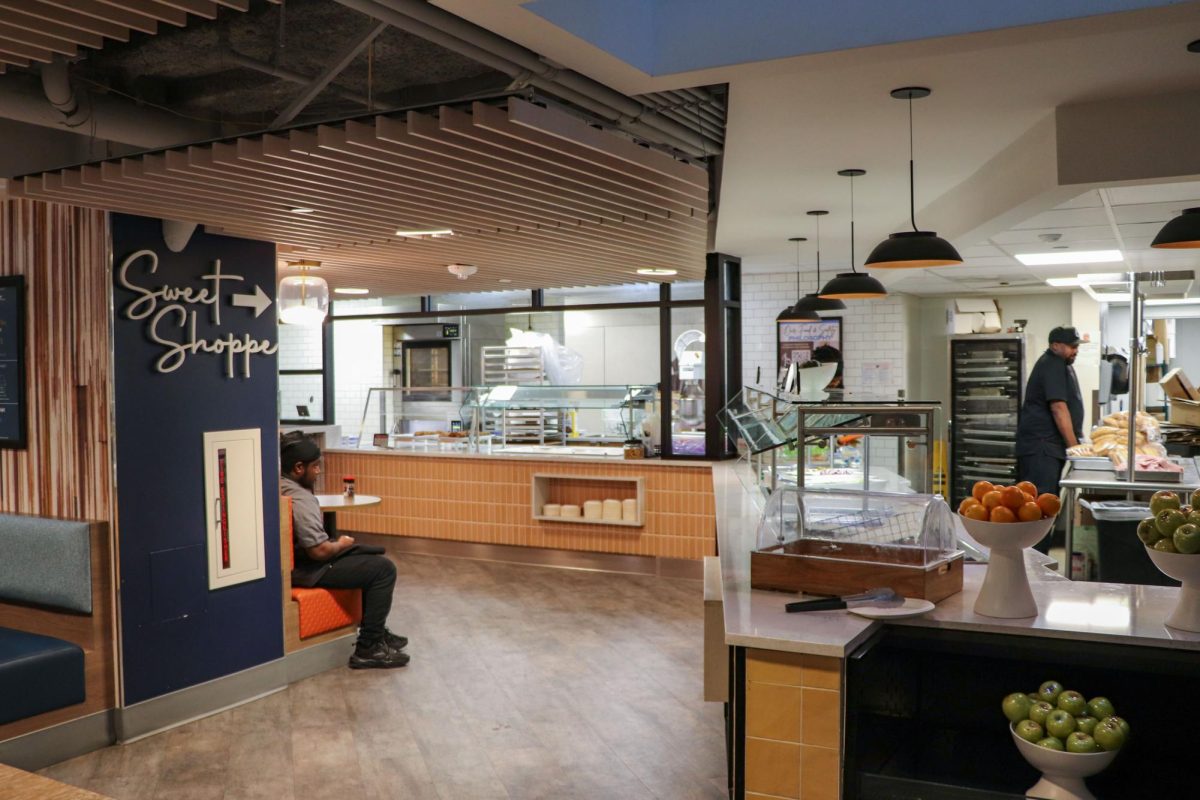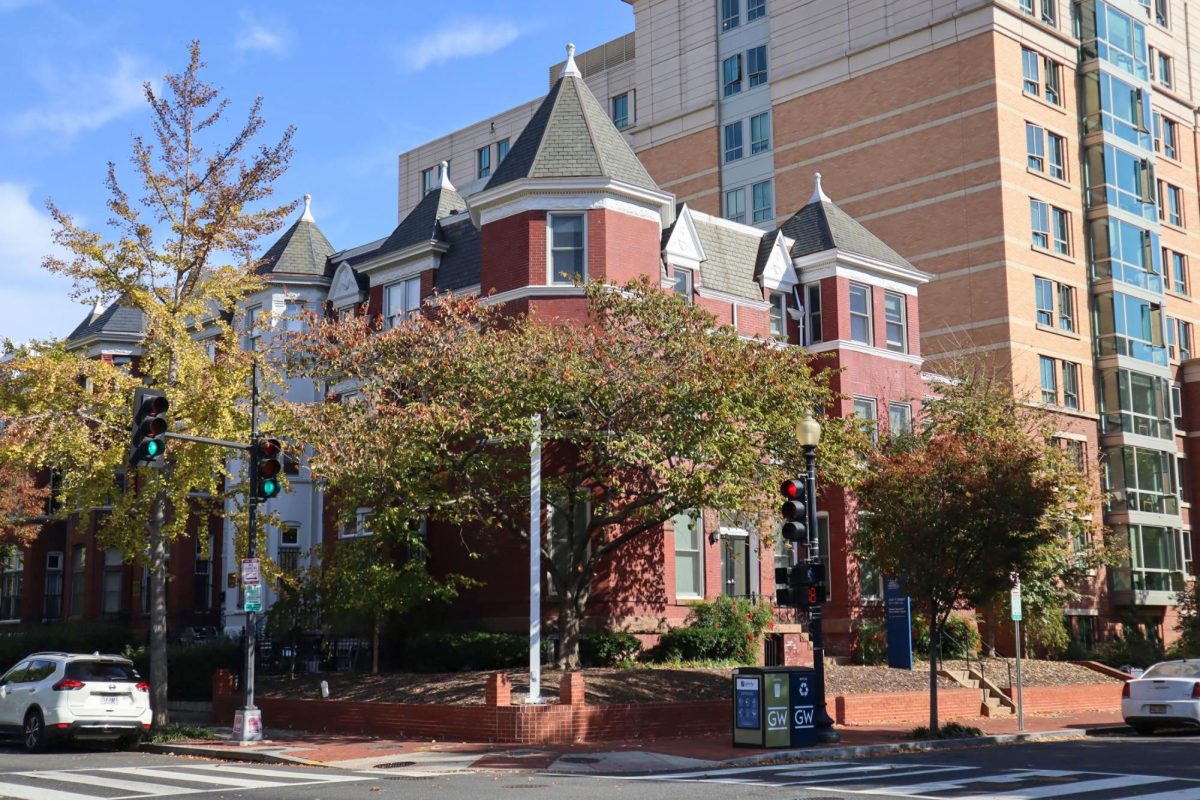Updated: Aug. 23, 2022 at 12:43 p.m.
Marble busts and tall statues have decorated Foggy Bottom for years, but the neighborhood’s newest memorial sticks out among the rest to honor a loss of life that devastated the local community this summer.
A white bicycle adorned wheel-to-wheel with flowers and pictures sits at the corner of 21st and I streets in memory of Shawn O’Donnell, who died last month after a construction truck driver fatally struck her while she cycled to work. The intersection has been the site of calls for physical repairs dating back to 2018 during which students, activists, neighborhood officials and businesspeople have said the crossing was dangerous for pedestrians and cyclists alike.
The installation of a new traffic signal – a light that locals said would have likely prevented the crash – was completed on July 29, nine days after the truck driver killed O’Donnell. Despite more than four years of concerns from local leaders, the intersection remained largely unchanged on the morning of O’Donnell’s death.
As friends and family mourn the death of O’Donnell, locals are demanding to know why the intersection remained untouched – an alleged inaction from D.C. officials that allowed the tragedy that too many saw coming – despite widespread calls for change.

Courtesy of Mary O’Donnell
A lost daughter
On the night of July 19, Mary O’Donnell – a former rear admiral in the U.S. Coast Guard who currently lives in California – called her daughter Shawn on FaceTime, when the pair spoke about the farmers’ market and ways to keep strawberries fresh before saying goodnight. The next morning, O’Donnell opened her door to a police officer who told her that Shawn had been killed after the driver of a construction truck turned into her while she rode her bicycle alongside to her job at the State Department.
O’Donnell said her daughter was a generous, one-of-a-kind person who traveled the world in an effort to make it a better place, like teaching English in Egypt and serving as a refugee officer in Thailand. O’Donnell said Shawn, a State Department official, was preparing to leave for Amsterdam, where her next assignment would be, when the driver struck and killed her.
“We were best friends,” O’Donnell said. “And now my best friend’s gone.”
In 2018, nearly four years before the truck driver struck and killed O’Donnell, two local leaders and a building developer said the District Department of Transportation should add safety infrastructure to the intersection of 21st and I streets to protect pedestrians and cyclists. When O’Donnell was killed, DDOT was in the process of installing a new traffic signal at that intersection, but locals said the changes didn’t come soon enough.
A DDOT spokesperson said in an email that full operation of the light didn’t start until July 29 – nine days after the July 20 death of Shawn O’Donnell.
Marina Streznewski, the then-president of the Foggy Bottom Association, told The Hatchet in 2018 that the intersection needed a traffic signal “a long time ago.”
“It was the same thing for years and years and years,” Streznewski said in an interview last week. “You just had to be really careful crossing that street.”
Streznewski, who said she thinks the new traffic signal would have prevented the collision, said crossing 21st Street has been difficult since her time as a GW student in the 1970s because drivers would need to use their own judgement to stop for pedestrians given the lack of a traffic signal or stop sign.
The pair of intersections of 21st Street with Pennsylvania Avenue and I Street were ranked by Greater Greater Washington in the top 10 most dangerous intersections in the District, based on DDOT and Metropolitan Police Department data. A total of 35 crashes took place at those intersections between 2015 and 2020 while locals made 13 safety requests to DDOT, according to GGWash.
“I was very sad,” Streznewski said about learning of the death of O’Donnell. “But I was not the least bit surprised.”
Too little, too late
A DDOT spokesperson said the traffic light’s installation was completed on July 19, the day before the fatal collision, but the signal entered an at least weeklong “flashing operation” – as required by DDOT – in which the lights blinked but were not fully operational. The lights were blinking but not operational when the driver of the truck struck and killed O’Donnell on the morning of July 20.
The spokesperson said construction on the traffic signal’s physical infrastructure began in the fall of 2021 and was completed this January, but the signal still required electrification from PEPCO. DDOT initially sent PEPCO an electrification request to turn on the power for the signal in August of 2021, but PEPCO did not complete the request until late this June, the spokesperson said.
They said the timeline for the design and construction of this signal was “typical” for “projects of this type.” The spokesperson said DDOT closed at least three requests for traffic safety investigations into the intersection since 2019 because of a previous rule requiring people requesting investigations to fill a separate form called traffic calming applications.
Boston Properties, the real estate firm that built the new 2100 Penn building, planned to pay for the new light in a deal with the Foggy Bottom and West End Advisory Neighborhood Commission to address the safety concerns following years of close calls at the intersection.
In 2018, Jake Stroman – the executive vice president of Boston Properties – said he expected construction on the traffic light to begin in 2019 and finish in 2021 due to multiple phases of approval for the project.
Calls for safety improvements continue
Shawn O’Donnell was one of three cyclists to die on the streets of D.C. in July, sparking calls to the D.C. Council to implement reforms that could protect cyclists, like banning right turns on red lights. The Council plans to vote in September on a bill – the Safer Streets Amendment Act of 2022 – that would prohibit vehicles from making right turns on red lights and allow bikers to treat stop signs as yield signs.
Yannik Omictin, an alumnus and commissioner on the Foggy Bottom and West End ANC, said he was shocked when he learned O’Donnell had died at that intersection, but not surprised. Omictin said the intersection of 21st and I streets had the “bare minimum” in terms of protections for pedestrians and cyclists.
“We knew this was going to happen at this intersection,” Omictin said. “I think every unprotected intersection in D.C. is a place where someone can die.”
In an ANC meeting February, Omictin identified about 50 intersections in the Foggy Bottom neighborhood eligible for improved infrastructure, including the corner of 21st and I streets. Omictin introduced a map of the intersections in the meeting and marked that intersection as one that needs a raised crosswalk, which increase visibility and slow vehicles down.
Omictin said in an interview that DDOT has failed to be proactive for years in constructing protective infrastructure, like traffic signals and stop signs because of insufficient staffing and poor management.
“DDOT can blame supply chain issues, they can blame PEPCO not being responsive to their requests to connect the power,” Omictin said. “But there are some places in D.C. that have waited years – there’s one place in Petworth that waited seven years for a four-way stop sign and some additional safety measures.”
Omictin said it shouldn’t have taken nearly five years to install a traffic signal at the intersection, and management at DDOT, including Mayor Muriel Bowser, should implement a plan to make the department’s processes more efficient.
“It is simply a failure of leadership at the highest level that we see projects that should happen in days, happen in years,” he said.
Looking forward, Omictin said community members and city officials should do everything in their power to advance the installation of bike lanes and other protective infrastructure to save lives in D.C. He said pedestrian and cyclist safety will make the streets more habitable to non-car transportation, modes that are more accessible for many residents that shouldn’t be dangerous.
“I’m sure that folks who work for DDOT and who have to interface with the community every day are sick and tired of hearing the community’s complaints and attending memorials for people who died because DDOT didn’t act fast enough,” he said.
Grace Chinowsky contributed reporting.
This post has been updated to correct the following:
The Hatchet incorrectly reported Mary O’Donnell served as a rear admiral within the U.S. Navy. She served as a rear admiral for the U.S. Coast Guard. We regret this error.







